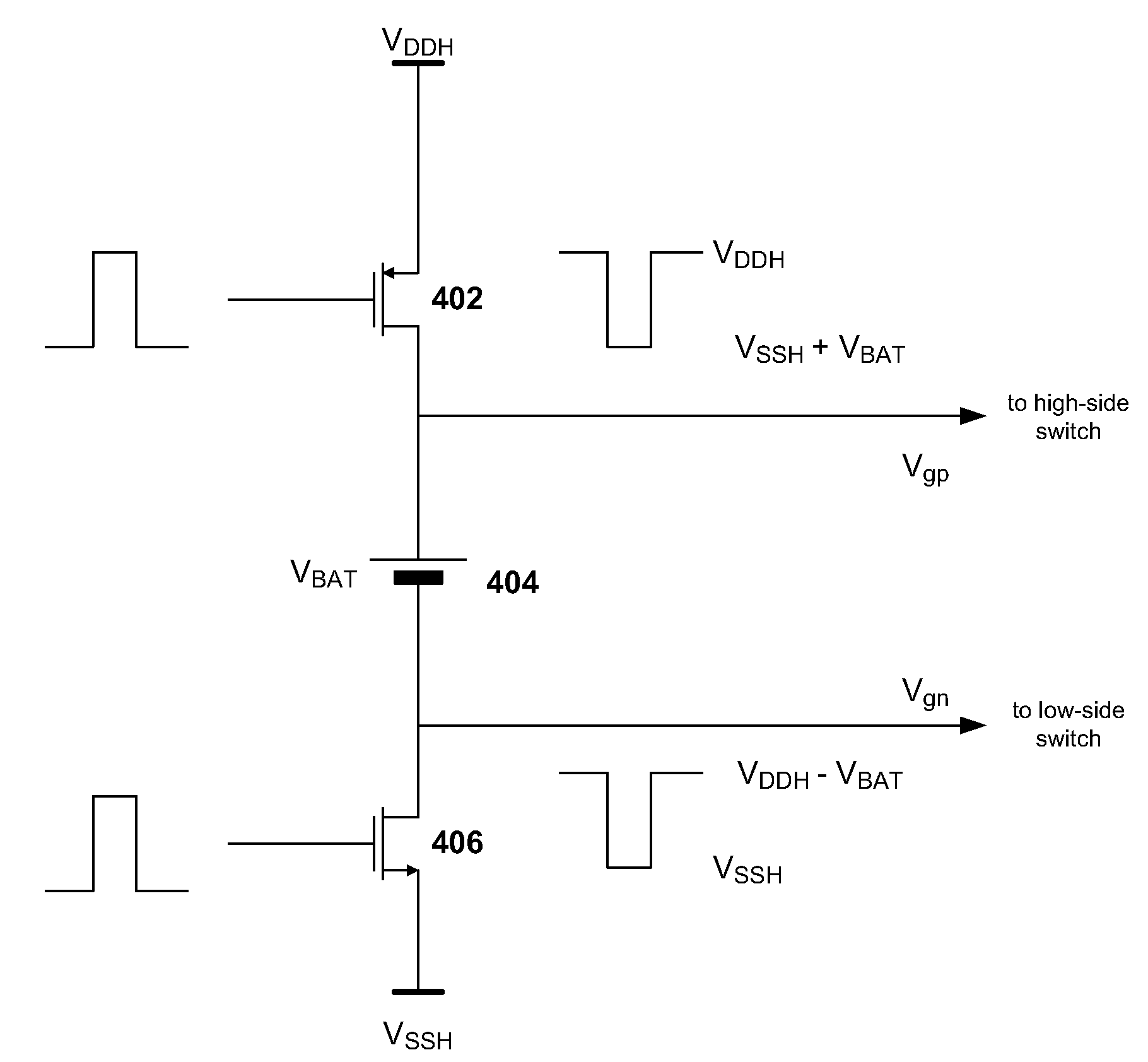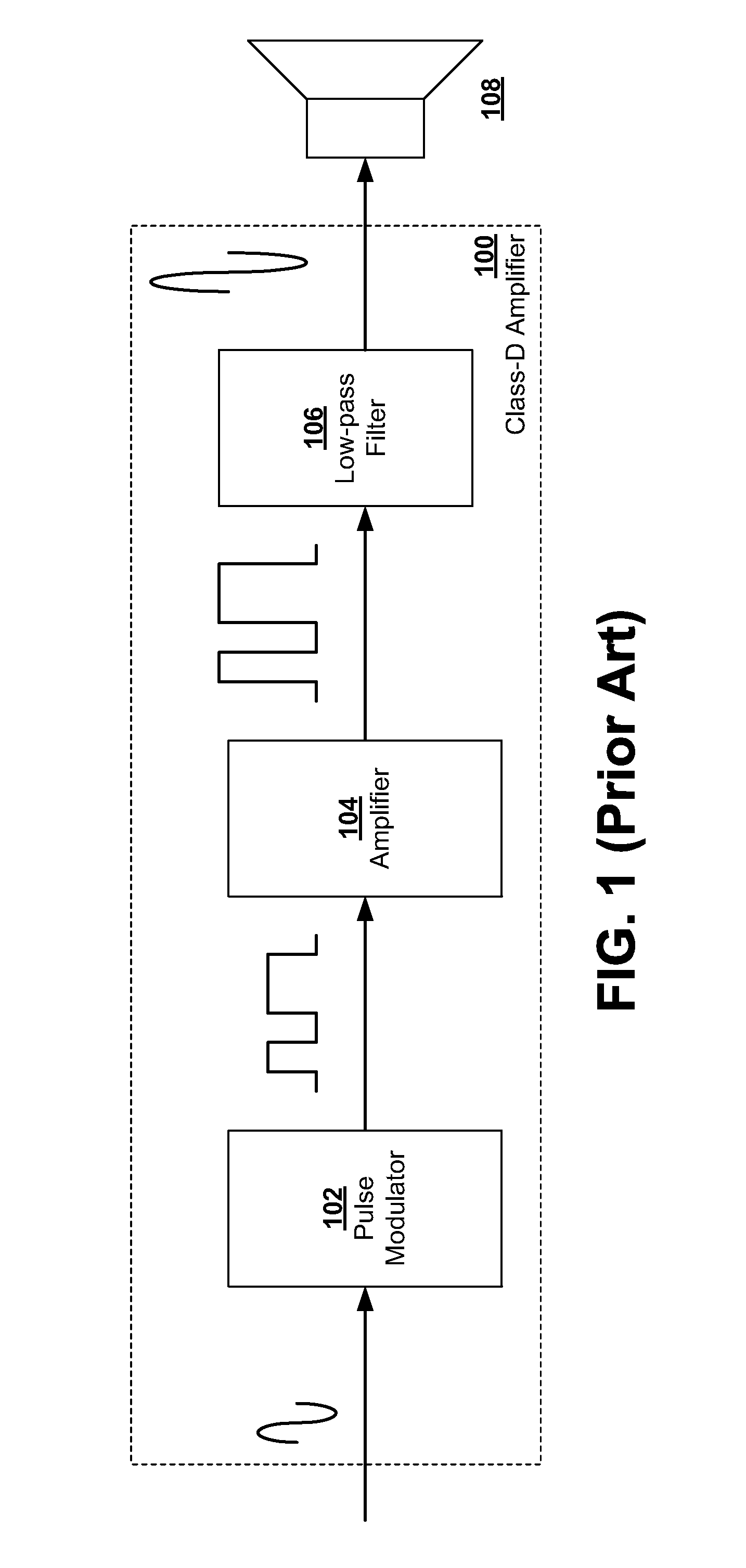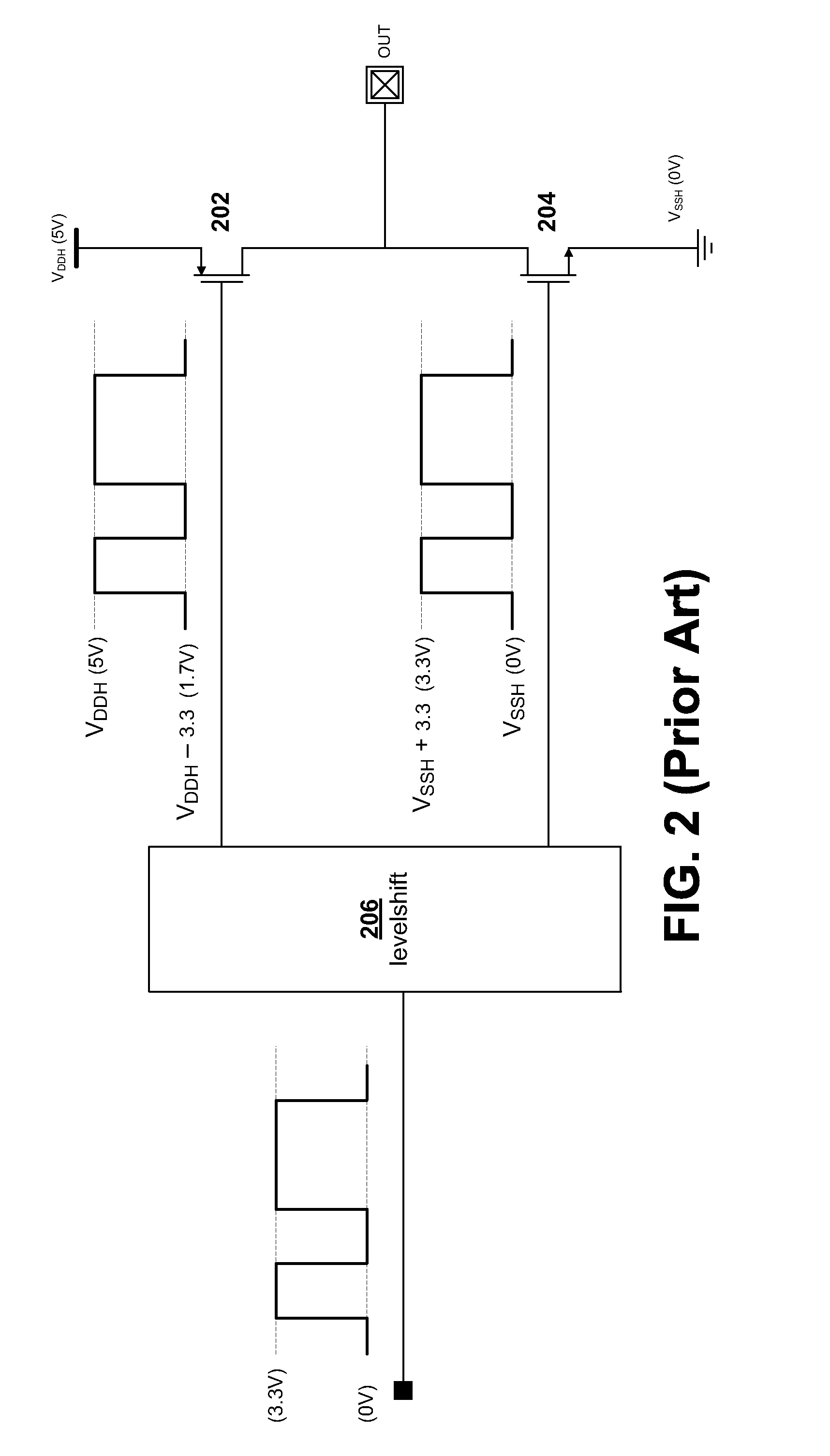Systems and Methods for Driving High Power Stages Using Lower Voltage Processes
a technology of process and high power stage, applied in the field of levelshifter, can solve the problems of reducing the performance of the circuit, reducing the power consumption of the circuit, and reducing the effect of total harmonic distortion (thd), and achieve the effect of fast transition, power consumption and size advantages
- Summary
- Abstract
- Description
- Claims
- Application Information
AI Technical Summary
Benefits of technology
Problems solved by technology
Method used
Image
Examples
Embodiment Construction
[0027]A detailed description of embodiments of the present invention is presented below. While the disclosure will be described in connection with these drawings, there is no intent to limit it to the embodiment or embodiments disclosed herein. On the contrary, the intent is to cover all alternatives, modifications and equivalents included within the spirit and scope of the disclosure as defined by the appended claims.
[0028]FIG. 4 is a circuit diagram of an embodiment of a level-shifter. The level shifter comprises pull-up PFET 402, pull-down NFET 406 and floating battery element 404. PFET 402 when switched ON pulls Vgp up to the voltage supplied by the high supply rail which has a high supply voltage denoted by VDDH. NFET 406 when switched ON pulls Vgn down to the voltage supplied by the low supply rail which has a low supply voltage denoted by VSSH and is sometimes set to the ground potential. Floating battery element 404 maintains its voltage VBAT across its two terminals regardl...
PUM
 Login to View More
Login to View More Abstract
Description
Claims
Application Information
 Login to View More
Login to View More - R&D
- Intellectual Property
- Life Sciences
- Materials
- Tech Scout
- Unparalleled Data Quality
- Higher Quality Content
- 60% Fewer Hallucinations
Browse by: Latest US Patents, China's latest patents, Technical Efficacy Thesaurus, Application Domain, Technology Topic, Popular Technical Reports.
© 2025 PatSnap. All rights reserved.Legal|Privacy policy|Modern Slavery Act Transparency Statement|Sitemap|About US| Contact US: help@patsnap.com



